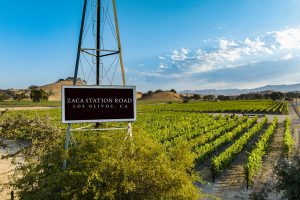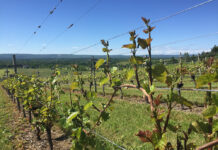If you are planning to sell your vineyard or winery, the first thing to consider is the way it presents itself to a prospective buyer.
Appearance is “extremely important as you never get a second chance at a first impression,” said Joe Ramos, co-director of the Vineyard and Winery Division at Berkshire Hathaway HomeServices California Properties in Los Olivos, Calif. “Whether you’re selling a vineyard or winery, or a residential property, it’s ‘Salesmanship 101’ to have the property looking its very best.”
“Anytime you put a property up for sale, you want it to look sharp,” agreed Preston Smith, owner-broker at Prolacom Realty Advisors in Santa Rosa, Calif. “People are looking for cleanliness and sanitary conditions. You want your vineyard to be clean and well-manicured. The rows should look nice and clean.”
“At a bare minimum, the property should be cleaned up and any necessary maintenance attended to,” said Ramos. “We highly recommend our seller clients conduct presale inspections so issues regarding safety, health and permit violations are resolved prior to going on the market. Everything should be in working order.”
Smith noted when a prospective buyer sees something needing repair, “they automatically expect to pay twice what it actually costs to fix it.”
Water
Buyers need to know that the wells and pumps can adequately produce water for the property’s needs, said Smith.
Ramos said presale inspections should include a general well inspection that measures flow rate (GPM), depth of the well, water level and a drawdown test to determine the recharge rate. He recommends water quality tests, which include bacterial and chemical testing, be conducted.
“If the well is also supplying water to a dwelling, a potability test should be conducted to ensure the water is drinkable,” he said. “The results of these inspections should be readily available to all prospective buyers.”
Paperwork
“It’s very important that all your paperwork be in order and documentable,” said Smith. This includes weigh tags, “so you can prove to a buyer what the vineyard has been producing for the past five years.”
“Apart from local permits, the two major ones are obtaining permission from the Alcohol and Tobacco Tax and Trade Bureau (TTB), and [in California] a California Alcohol Beverage Control (ABC) Type 02 Winegrowers license,” said Ramos, who suggests that sellers understand everything they can about their property.
“Sellers should become experts on what they’re selling and really know the ins and outs of their property because if they don’t, buyers will become the experts and use the information they learn to drive the price of the property down in secondary negotiations,” he said.

Equipment
“It is better to include the equipment and offer the property as ‘turn-key’ as possible,” said Ramos. “Many buyers are just beginning their path in the wine industry and may not know everything that is needed to produce wine. Having a farm and winery that includes all the equipment needed breaks down a big barrier to entry and allows them to step into a vineyard and winery with relative ease. The equipment is often more valuable to an incoming buyer than it is in the used equipment market.”
Including equipment in a sale depends on what the seller plans to do, according to Smith. If the seller is only selling one of several properties, he will probably not include the equipment. Often, a new vineyard manager will bring in their own equipment, lowering the value of the seller’s items in the sale.

Employees
There are different opinions on the importance of having experienced and competent employees. Ramos considers them “invaluable” to a sale.
“Working properties often have an existing human element that should stay in place,” he said. “This includes vineyard managers, ranch managers, tasting room staff, other employees and third parties who assist immensely in the day-to-day operations, know the properties and business intimately, and keep properties operating smoothly. It’s important to understand the full scope of the day-to-day operations and what it entails before diving into a working property. It’s also important to tread softly upon entry and not try to reinvent the wheel.”
However, Smith explained the importance of employees to a sale depends on the buyer. If a 300-acre vineyard is being sold to a supergrower, “they already have a staff and their own vineyard management.”
Brands and Bottom Line
The quality of a winery’s product “is paramount, especially when that product leads to the formation of a reputable brand and high demand,” said Ramos.
“If you have a high-end brand, a best-of-show, award-winning wine, you can command a higher price,” said Smith. “If you have Safeway and Costco buying your wines, you can command a higher price.
“Your bottom line is important in the evaluation of a winery,” he added. A prospective buyer wants to know “the net dollar amount they can depend on.”
“Recent profits are very important to the marketability of the property and operation as they provide a road map of what a buyer can expect when they take ownership,” said Ramos. “This allows incoming buyers an opportunity to plan better and manage expectations. However, a successful business often comes at a higher cost than businesses that are losing money. If the business has experienced losses, especially over a long period of time, it is often recommended the seller not include the business and simply focus on the real property component.”
However, the bottom line may not matter to the sale.
“Oftentimes, buyers are purchasing the property as a heritage property with the intent that the venture be multi-generational,” said Ramos. “Many buyers want to craft a business that is personal to their tastes and vision, including branding and the wine’s characteristics. In these instances, the business is less important because the buyer desires to form the business from the ground up.”
Tasting Rooms and Homes
“Wineries with a tasting room are often easier to sell because the buyer pool is larger,” said Ramos. “Many buyers enjoy the social aspect of the wine industry, and there’s no better way to interact and mingle with patrons than in a tasting room environment.”
“Homes are secondary,” said Smith, who added if the property has a home or two, they are generally for employees.
Ramos believes some attention should be given to any homes on the property but urges caution before making any improvements.
“We typically recommend being careful as many buyers have their own aesthetic preferences and may not like what the seller decides to do, oftentimes at considerable costs,” he said. “If improvements are going to be made, focus on items that will provide the biggest bang for your buck. These might be particular items that really date the house and scream that it’s due for a major overhaul. Often, these are features that were popular 10 or more years ago and have fallen out of favor. If you have purple carpet, that may be an item worthy of tackling. Remember to put your personal preferences aside and take a more neutral route. A quick Google search can help by providing trending materials, color schemes and ideas.”
When to Sell
“The holidays are horrible,” said Smith, explaining when definitely not to sell. “People are home with their families. If you put property for sale in November, you’re not going to get activity until January when people are back in business.”
He advises sellers, if possible, to put properties on the market in late spring. “May and June are always nice,” he said. “It’s always good after the vines leaf out.”
But spring brings another challenge.
“As spring begins, so do the costs,” said Smith, raising another major consideration in a sale. “Who’s going to get the crop?”
When selling a vineyard, it’s important to determine whether the buyer or seller gets the crop, and who pays the expenses to grow it.
Ramos recommends prospective buyers evaluate things such as acreage, size of the vineyard and winery, location, varietals, soil, water, weather, American Viticultural Areas, pedigree of neighboring vineyards, management, condition of the vines, entitlements granted under the permit and whether there is disease or a virus present.








